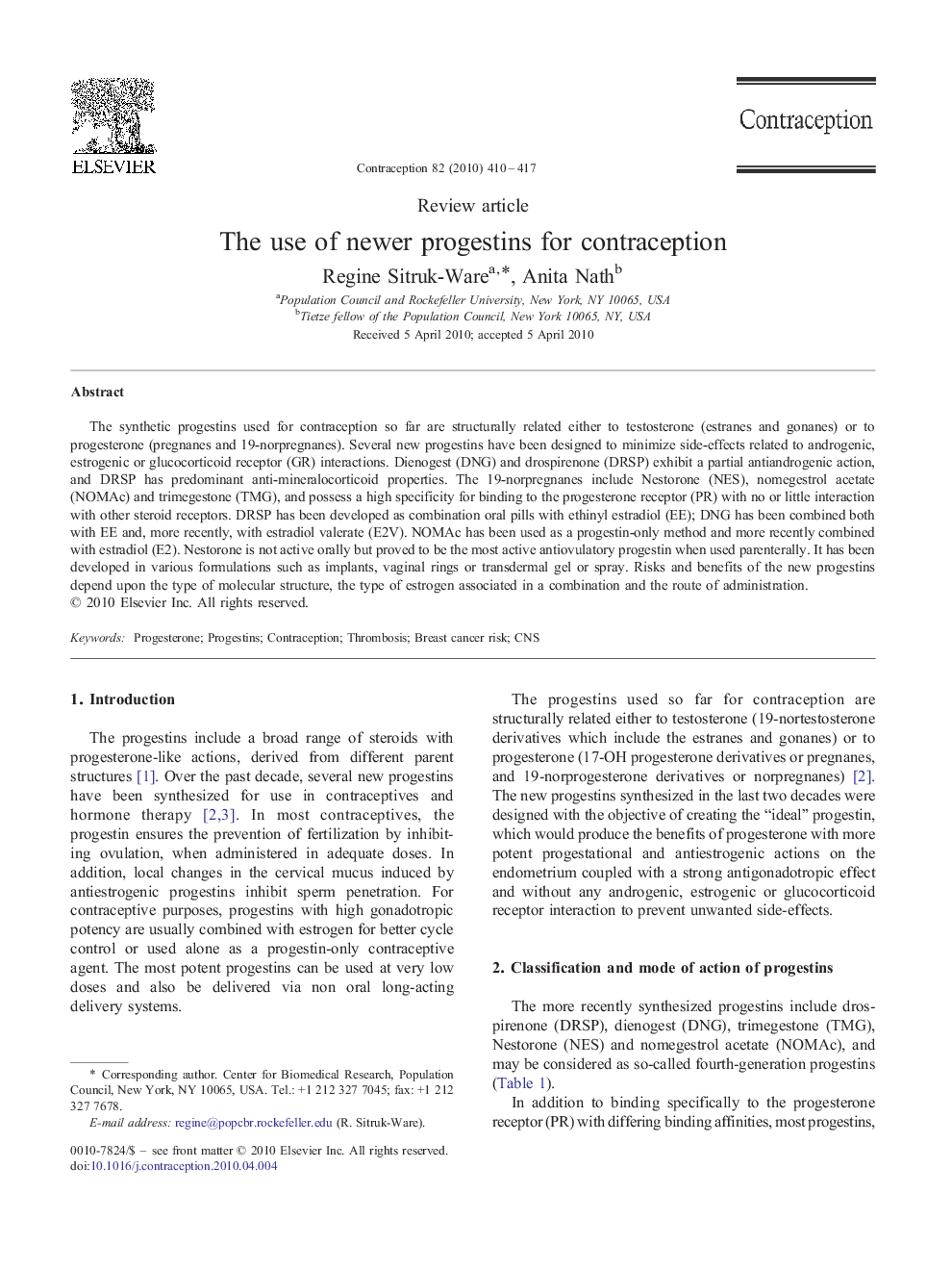| Article ID | Journal | Published Year | Pages | File Type |
|---|---|---|---|---|
| 3914438 | Contraception | 2010 | 8 Pages |
The synthetic progestins used for contraception so far are structurally related either to testosterone (estranes and gonanes) or to progesterone (pregnanes and 19-norpregnanes). Several new progestins have been designed to minimize side-effects related to androgenic, estrogenic or glucocorticoid receptor (GR) interactions. Dienogest (DNG) and drospirenone (DRSP) exhibit a partial antiandrogenic action, and DRSP has predominant anti-mineralocorticoid properties. The 19-norpregnanes include Nestorone (NES), nomegestrol acetate (NOMAc) and trimegestone (TMG), and possess a high specificity for binding to the progesterone receptor (PR) with no or little interaction with other steroid receptors. DRSP has been developed as combination oral pills with ethinyl estradiol (EE); DNG has been combined both with EE and, more recently, with estradiol valerate (E2V). NOMAc has been used as a progestin-only method and more recently combined with estradiol (E2). Nestorone is not active orally but proved to be the most active antiovulatory progestin when used parenterally. It has been developed in various formulations such as implants, vaginal rings or transdermal gel or spray. Risks and benefits of the new progestins depend upon the type of molecular structure, the type of estrogen associated in a combination and the route of administration.
